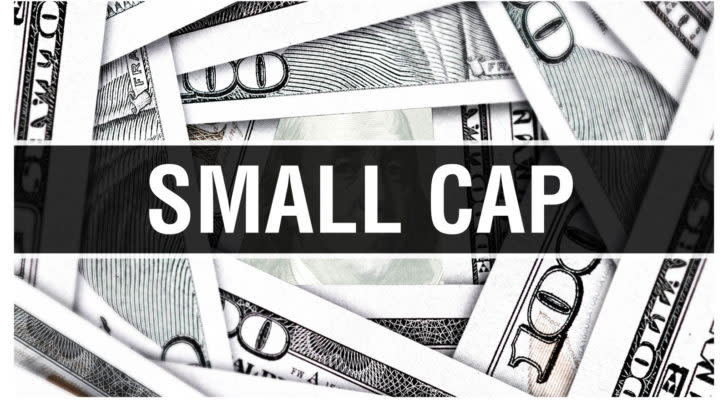3 Dividend Stocks That Are at Risk of Cutting Their Dividends
Dividend stocks can provide steady cash flow for long-term investors. These corporations often distribute cash to investors every quarter so they can reinvest into more shares.
However, some dividend-paying companies have seen their financials struggle over the years. These companies become vulnerable to dividend cuts which can have devastating effects on shareholders.
Not only will they receive a lower dividend payment every quarter, but also stocks that cut their dividends often get dropped by investors. Some retirees rely on dividend payments to stay afloat. If you have any of these three dividend stocks, you may want to reassess your holdings.
InvestorPlace - Stock Market News, Stock Advice & Trading Tips
Best Buy (BBY)

Source: Ken Wolter / Shutterstock.com
Best Buy (NYSE:BBY) is a candidate for going out of business within the next ten years. Within that stretch, the company is likely to reduce or suspend its dividend. In fact, BBY went from nearly 1,800 stores in 2014 to roughly 1,100 stores by the end of 2022.
Unfortunately, the company currently has a 5.50% dividend yield due to the stock’s decline. Shares are down by 17% year to date (YTD) and have fallen by 2% over the past five years.
Recently, Best Buy issued a dividend payment of $0.92 per share. In the same quarter, Best Buy generated a GAAP diluted EPS of $1.25. That translates into a 73.6% dividend payout ratio.
Some corporations can maintain that dividend payout ratio but don’t give investors much room for price appreciation. However, Best Buy continues to report year-over-year (YOY) revenue and earnings declines. Those two figures dropped by 7% and 10%, respectively.
Notably, the 10% YOY drop in net income is more concerning since that’s the source of dividend funding for Best Buy. The company’s top three business segments each came in with back-to-back years of declining sales. These three segments (Computing and Mobile Phones, Consumer Electronics, and Appliances) make up 87% of the company’s total revenue.
BBY’s current liabilities of $8.43 billion slightly edge out current assets of $8.30 billion. However, Best Buy counts merchandise inventories as $5.65 billion of its total current assets.
Finally, Best Buy has razor-thin margins, and it depends on selling sufficient inventory to keep up with debt that matures at the end of the year. Operating on tight profit margins below 4% over the past few quarters, it’s a risky stock that doesn’t have much to give to investors.
Verizon (VZ)

Source: Ken Wolter / Shutterstock.com
Verizon (NYSE:VZ) also seems like a candidate for a dividend cut. It suffers from frequent YOY declines in revenue and earnings. If these two metrics steadily drop long enough, it will be impossible to maintain the dividend.
Also, Verizon is suffering from a significant ramp-up in current liabilities compared to current assets. In the third quarter, Verizon’s balance sheet displayed $38.1 billion in total current assets against $55.7 billion in total current liabilities. The latter grew by 11.0% since December 31, 2022. During the same amount of time, current assets have only increased by a mere 0.7%.
Clearly, Verizon has a big debt problem. So, the company will have to refinance its current liabilities and get stuck with much higher interest rates on its obligations.
Further, Verizon’s dividend growth rate is less than inspiring. It seems that the telecom giant is doing the bare minimum to appease shareholders and make them think that everything is fine. The company only raised its dividend from $0.6525 to $0.6650, a 1.9% YOY increase. VZ has been maintaining this low growth rate over the past few years.
Kronos Worldwide (KRO)

Source: Shutterstock
Kronos Worldwide (NYSE:KRO) is a small-cap titanium dioxide producer that has been reporting net losses for a few quarters. The stock’s dismal 24% YTD decline partially explains the reason the dividend yield is over 10%.
In addition, the company’s dividend growth history is suspicious. Kronos Worldwide does not raise its dividend each year. The company raised its quarterly dividend per share from $0.18 in 2021 to $0.19 in 2022.
And yet, KRO didn’t raise its dividend in 2023. Also, it failed to raise its dividend from 2019 to 2022. Kronos Worldwide’s earnings haven’t given investors any reason for optimism. The corporation reported a $20.4 million net loss in the third quarter.
So, how can a company that reported a loss of $0.18 per share in the third quarter keep up with a dividend that’s currently set at $0.19 per share each quarter? Investors know something is up. That’s why they have scurried away from the stock and brought the yield above 10%. Kronos Worldwide is a dividend yield trap.
On the date of publication, Marc Guberti did not have (either directly or indirectly) any positions in the securities mentioned in this article. The opinions expressed in this article are those of the writer, subject to the InvestorPlace.com Publishing Guidelines.
Marc Guberti is a finance freelance writer at InvestorPlace.com who hosts the Breakthrough Success Podcast. He has contributed to several publications, including the U.S. News & World Report, Benzinga, and Joy Wallet.
More From InvestorPlace
ChatGPT IPO Could Shock the World, Make This Move Before the Announcement
Musk’s “Project Omega” May Be Set to Mint New Millionaires. Here’s How to Get In.
The Rich Use This Income Secret (NOT Dividends) Far More Than Regular Investors
The post 3 Dividend Stocks That Are at Risk of Cutting Their Dividends appeared first on InvestorPlace.
